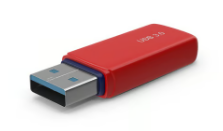The Dangers of Using Unknown USB Drives: What You Need to Know
USB devices have become ubiquitous. They are used for everything from transferring data to charging devices. However, what happens when you find a USB drive that you didn’t buy or receive from a trusted source? While it might be tempting to plug it in and see what it can do, the risks far outweigh any potential benefits. Let’s explore why using unknown USB plugs can be dangerous and what precautions you should take.
The Risks of Unknown USB Devices
- Malware and Viruses
One of the most significant risks of plugging in an unknown USB device is the potential for malware infection. Cybercriminals can load malicious software onto USB drives that can compromise your computer or network. This can lead to data theft, loss of personal information, or even complete system failure. - Ransomware Attacks
Some USB drives are designed specifically for ransomware attacks. Once plugged in, they can encrypt your files, making them inaccessible until a ransom is paid. The consequences can be devastating, especially if you don’t have backups of your important data. - Data Theft
USB devices can be used to extract sensitive information from your systems without your knowledge. Even if it appears to be a harmless device, it could be designed to access your files and send them to an external server. - Compromised Network Security
Connecting an unknown USB device to your network can create vulnerabilities that hackers can exploit. This is especially concerning in a workplace environment, where one compromised device can lead to a broader network breach.
What to Do If You Find an Unknown USB Drive
- Do Not Plug It In
This may seem obvious, but the first rule is to avoid plugging in the unknown USB device. Curiosity can be tempting, but the potential risks are significant. - Report It
If you find a USB plug in a public place, consider reporting it to the authorities or the venue’s management. They may want to investigate or take measures to prevent other individuals from encountering the same situation. - Use a Virus Scan
If you have already plugged it in (which we advise against), disconnect it immediately. Then, use a reliable antivirus program to scan your computer for any potential threats. If any malware is found, follow the recommended steps to remove it. - Consider Safe Handling
If you still want to investigate the USB plug’s contents, use a dedicated, isolated system that doesn’t hold any sensitive information, or consider using a virtual machine designed for testing unknown drives. This way, you minimize the risk of compromising your primary devices. - Practice Awareness
Be cautious with all USB devices, even ones you receive from seemingly trustworthy sources. Always verify where the device came from and who provided it before connecting it to your system.
While USB technology provides convenience and functionality, it also comes with inherent risks, especially when using unknown devices. The potential for malware, data theft, and compromised security makes plugging in an unknown USB drive a risky endeavor.
Always prioritize your cybersecurity by maintaining best practices, staying informed, and adopting a cautious approach when it comes to unfamiliar technology. Remember, in the world of digital devices, it’s better to be safe than sorry!
